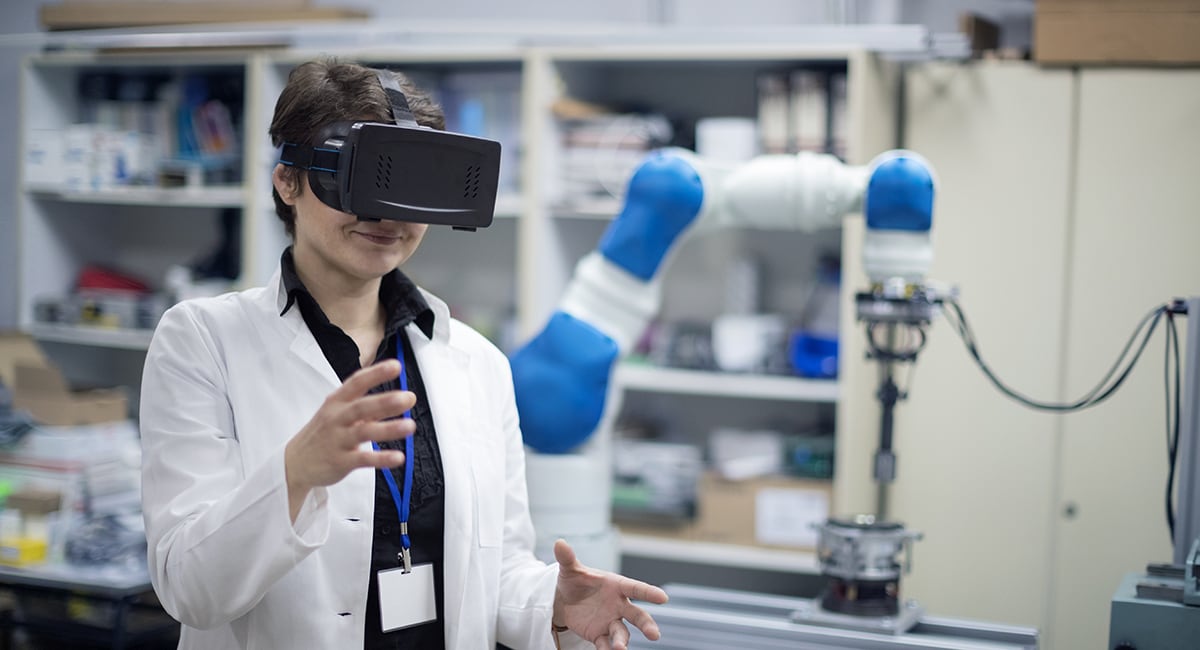April 13, 2020
5 Use Cases for 5G That Higher Education Should Explore Over the Next 5 Years
Colleges and universities need to consider potential applications now to prepare themselves for the near future.

I’ve seen countless headlines declaring 2020 to be “The Year of 5G” in higher education. To be honest, that was always an unlikely scenario, reflecting hype more than reality of conditions for scale. And now, with higher education IT departments scrambling to enable increased remote learning due to coronavirus closures and social distancing, other priorities may demand immediate focus compared with on-campus wireless connectivity.
According to Gartner and others that have closely studied the technology, we’re probably around three to five years away from truly scaling practical 5G experiences. Colleges and universities, with their spread-out campuses (not to mention their young, bandwidth-devouring user bases) are likely to be among the first organizations to aggressively adopt the emerging mobile broadband standard.
Learn how CDW can help your college or university achieve its IT goals.
While we may be a few years away from widespread adoption, a multiyear plan is important when it comes to on-campus technology rollouts, and it’s still important for colleges and universities to begin exploring potential 5G applications as they consider their wireless roadmap. Here are five use cases worth considering.
1. Outdoor Connectivity
One factor that often gets overlooked in discussions about 5G is the emergence of Wi-Fi 6 (or 802.11ax). It’s highly likely that most colleges and universities will rely on Wi-Fi 6 for most indoor use cases and will lean on 5G for areas of campus that they have historically struggled to cover with Wi-Fi. Outdoor areas are an obvious fit. Using 5G to provide outdoor connectivity will do more than just allow students to study on the quad on nice days. For example, software-defined networking will enable students to start streaming a video lecture from a dorm room or academic building via a Wi-Fi signal and then seamlessly continue on a 5G network without affecting the user experience.
Students might also rely on 5G to connect while riding campus buses. Sports stadiums and the Internet of Things are two more outdoor use cases where 5G has the potential to shine. 5G’s strengths are extreme density, high data rates and movement over an outdoor area. It’s true that 4G LTE, Wi-Fi or even LoRa (in the case of IoT) might end up being a better fit for some of these applications, depending on factors such as price and performance. But it’s important for colleges and universities to explore all of their options and to consider where 5G will be the best choice based on the experience they’re trying to achieve.
2. Extending Campus Networks
Students learn not only on campus but in all sorts of places, of course. 5G may give colleges and universities the ability to extend their networks far beyond their own spaces — potentially even covering an entire urban area. Much of this will depend on yet-to-be-defined costs, but the idea of giving students wireless network access all the way to their off-campus apartments is an exciting one.
3. Network Segmentation
It’s possible that colleges and universities will want to direct certain traffic to their Wi-Fi networks while relying exclusively on 5G connectivity for other traffic, either for security or performance reasons. For instance, some institutions may use Wi-Fi for things like gaming and streaming entertainment services, reserving 5G connectivity for academic traffic.
4. Augmenting Existing Coverage
Some institutions may find themselves in a situation where certain buildings are running out of wireless networking capacity due to the limitations of existing infrastructure, but a complete refresh of the wireless infrastructure simply isn’t in the cards (whether due to budgetary reasons or other factors). In these instances, they may choose to use 5G as a stopgap to beef up their bandwidth while getting a few more years of useful life out of their Wi-Fi solutions.
5. Research Labs
One of the most important early investments an institution can make is 5G access specifically dedicated to innovation. While today’s headlines are filled with potential vaporware, to make tomorrow’s reality we need students and faculty proving new possibilities. They should be given space to test out the mobile broadband connectivity for use cases such as virtual and augmented reality, and robotics. Consumer applications for these technologies are still emerging, but such 5G research “playgrounds” may uncover valuable applications that we haven’t even considered yet.

